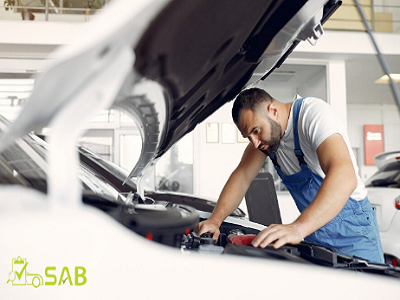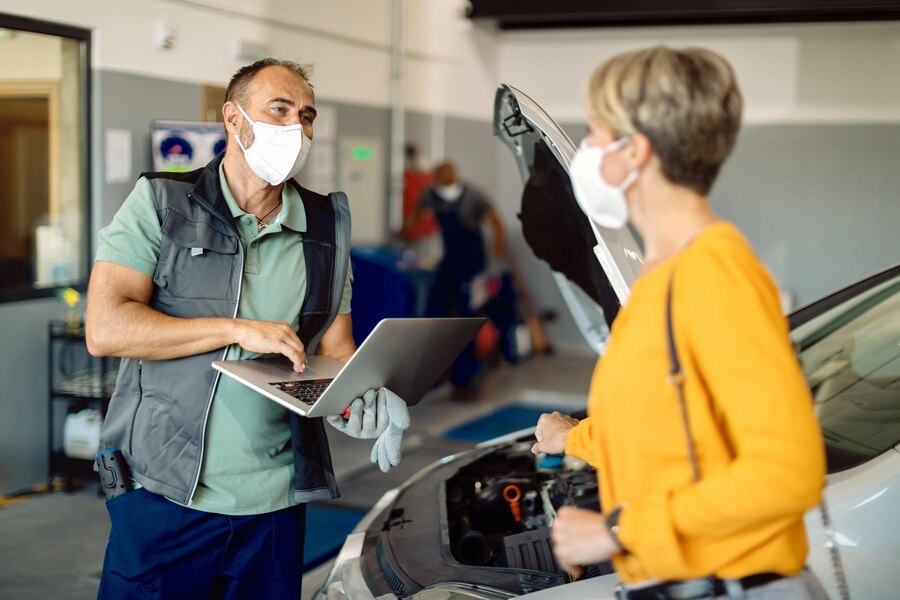Getting ready for a mobile roadworthy inspection in Brisbane? First, make sure your vehicle is clean inside and out—it’s easier for inspectors to check everything when there’s no clutter. Check the basics: tire pressure, oil levels, and lights. Make sure your brakes are in good shape and your wipers are working properly. Also, double-check that all required documents are ready and accessible. A bit of preparation goes a long way in ensuring a smooth inspection and potentially saving you from any surprises.
Vehicle Cleanliness Counts
Before your mobile roadworthy inspection, giving your vehicle a thorough clean can make a big difference. A tidy car allows the inspector to easily access and assess important areas like the engine compartment, undercarriage, and interior. Removing any clutter not only helps the inspector do their job efficiently but also helps you spot potential issues that might need attention. A clean vehicle shows you care about its condition and helps ensure that nothing gets overlooked during the inspection.
Preparing your vehicle for a mobile roadworthy inspection starts with cleanliness. A clean car not only makes a great first impression but also helps ensure that all parts of the vehicle are easily accessible for inspection. Begin by giving both the interior and exterior a thorough clean. On the outside, wash off any dirt and grime, paying special attention to the wheel wells and undercarriage where road dirt and salt can accumulate. Inside, remove any personal items, trash, or clutter that might obstruct the inspector’s view of important components like the pedals and gear shifter. Clean the windows and mirrors to ensure they’re free from smudges or obstructions that might affect visibility.
Tire and Brake Checks
Properly functioning tires and brakes are crucial for a successful roadworthy inspection. Start by inspecting your tire tread depth and ensuring that the tires are inflated to the correct pressure. Check for any signs of damage or wear. For brakes, listen for any unusual noises and test the brake pads and fluid levels. Addressing these components before the inspection can help you avoid any costly repairs and demonstrate that your vehicle is safe and roadworthy.

Tire Tread Depth
Check your tire tread depth to ensure it meets the legal minimum. Worn-out treads can affect your vehicle’s grip on the road and may cause you to fail the inspection. Use a tread depth gauge or the penny test to measure how much tread you have left and replace tires if necessary.
Tire Pressure
Ensure your tires are inflated to the manufacturer’s recommended pressure. Under-inflated or over-inflated tires can lead to uneven wear and poor handling. Check the pressure with a gauge and adjust it according to your vehicle’s specifications.
Tire Condition
Inspect your tires for visible signs of damage, such as cracks, bulges, or punctures. These issues can lead to dangerous blowouts and may result in a failed inspection. Replace any damaged tires before the inspection to ensure safety and compliance.
Brake Functionality
Listen for any unusual noises when applying the brakes. Squeaking or grinding sounds may indicate worn brake pads or other issues. Test the brakes by pressing them gently while driving to ensure they respond properly and provide adequate stopping power.
Brake Fluid Levels
Check the brake fluid level in the reservoir to ensure it’s within the recommended range. Low brake fluid can affect braking performance and safety. Top up the fluid if needed and look for any leaks that might indicate a problem with the braking system.
Lights and Signals
Ensure all your vehicle’s lights and signals are in working order before the inspection. This includes headlights, brake lights, turn signals, and hazard lights. Faulty lights or signals can be an immediate red flag during the inspection. Replace any burnt-out bulbs and check that all lights are properly aligned. Having fully operational lights not only helps you pass the inspection but also ensures your safety on the road.
Ensuring all lights and signals are functioning correctly is essential for a smooth roadworthy inspection. Start by checking your headlights, including both high and low beams, to make sure they illuminate properly and are correctly aligned. Misaligned headlights can affect visibility and may fail the inspection. Next, test your brake lights by having someone press the brake pedal while you observe from behind, or use a reflective surface to check their operation. Turn on your turn signals and hazard lights to confirm they flash consistently and clearly.
Fluid Levels and Leaks
Check all essential fluid levels, including engine oil, coolant, brake fluid, and transmission fluid. Make sure they are at the recommended levels and top them up if necessary. Also, look for any signs of leaks under the vehicle. Addressing any leaks or low fluid levels before the inspection can prevent issues and show that your vehicle is well-maintained. It’s a simple but effective way to avoid unnecessary complications during your roadworthy inspection.
Before your mobile roadworthy inspection, checking and addressing your vehicle’s fluid levels is essential. Start by inspecting the engine oil, coolant, brake fluid, and transmission fluid. Ensure each fluid is at its recommended level; low fluid levels can indicate potential issues or leaks. Top up fluids as needed, but also look for any signs of leaks. A puddle or wet spots under your vehicle could signal a problem with seals or hoses.
Document Preparation
Gather and organize all necessary documents before your mobile roadworthy inspection. This typically includes your vehicle registration, proof of identity, and any previous inspection reports or service records. Having these documents easily accessible helps streamline the inspection process and prevents any delays. Being prepared with the right paperwork shows that you are organized and ready, which can positively influence the inspection experience.
Interior Inspection
Don’t forget to check the interior of your vehicle before the inspection. Ensure that all safety features, like seat belts and airbags, are functioning correctly. Inspect the dashboard for any warning lights that might indicate underlying issues. Additionally, clean the interior to remove any loose items or debris. A well-maintained and clean interior not only contributes to a successful inspection but also enhances overall driving comfort and safety.
Conclusion
Preparing for a mobile roadworthy inspection is essential to ensure your vehicle meets all safety and compliance standards. By following the outlined steps, from checking tires and brakes to ensuring proper documentation, you can streamline the process and avoid unexpected issues. Regular maintenance and thorough preparation not only enhance vehicle safety but also contribute to a smoother inspection experience.
For residents of Brisbane, SAB Mobile Roadworthy Certificate is your trusted partner in achieving a successful inspection. Our team is dedicated to providing professional and efficient service right at your location.
